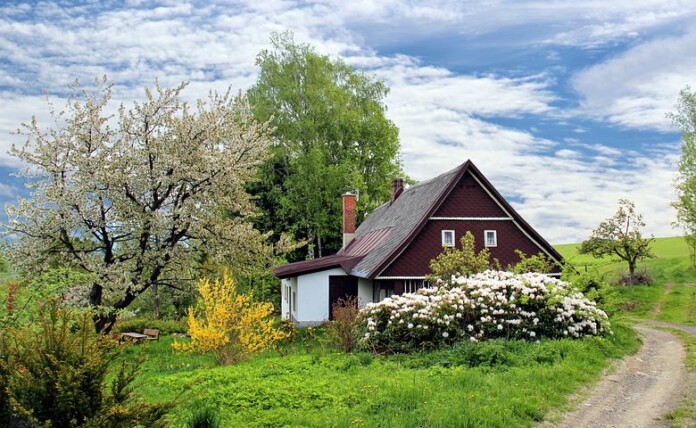Whether you live in the heat of the south or the cold of the north, you use whatever you can to keep your home’s temperature comfortable. That said, while doing this, you want to make sure that your home is as energy efficient as possible. It is eco-friendly and saves your HVAC system from wear and tear, and helps you save on your energy bills.
One of the ways to do this is through ICF construction. This involves using concrete forms to insulate your home from whatever mother nature throws at it. Using these forms helps to reduce greenhouse gas emissions and how much energy you consume. In addition, they compare very favorably with wood frame homes, which have been the standard for the past several decades. Here’s how they stack up.
What is ICF Construction?
First, an explanation of ICF construction. ICF stands for integrated concrete form. Insulated blocks are set up in an interlocking pattern, much like toy blocks are. The blocks are then filled with concrete and covered by siding or shingles. The process is much faster than traditional wood framing because the blocks can be set up very quickly.
Energy Efficiency
We all want to heat and cool our homes to a comfortable level while using the lowest amount of energy to do it. You can have this with ICF construction. Some estimates have shown that these homes take up to 22% less energy to heat then when compared to wood frame homes. All your seams and seals are closed up tight, so air cannot escape or get into the home. Wood tends to develop gaps over time due to the nature of the materials used. Concrete is strong and durable, so that the tight seal will last your lifetime.
The efficiency of ICF is apparent in more than just the HVAC usage. ICF construction requires less equipment and building times. In most cases, there is no need for heavy equipment, and there is less labor. All in all, it’s a more efficient choice than wood framing in more ways than one.
Durability
In terms of strength and durability, there is simply no comparison between the two. The interlocking blocks used with ICF create a sealed barrier that will last decades. On top of that, ICF cubes are resistant to moisture, pests, mold, and rust. As a result, an ICF home can withstand even the toughest weather, as they have been known to escape direct hits from hurricanes without a scratch. In addition, buildings constructed using ICF techniques are wind, fire-resistant, impact resistant, and earthquake-resistant. You can’t say the same about wood-frame homes, which are known to be affected by all of those things.
Sound Proofing
Soundproofing might not be the first thing you think about when it comes to building your home, but it should be. This goes double for houses with children or people who like to have parties and social gatherings. The thick concrete used in ICF construction provides a 30% reduction in sound, which makes it an excellent dampener. In addition, it’s often used in the construction of buildings in the city where there is a lot of noise, so it will be more than adequate for your home.
Wood frame homes do have a dampening effect, but not to the extent of an ICF home. It’s closer to 15% of noise reduction, and the difference between those is like a person shouting. Using ICF for your home build means that you can have peace and quiet when you want it, but you’ll also be able to turn up the volume occasionally without bothering the neighbors.
Eco-Friendly
The energy-efficient of an ICF home isn’t the only thing that makes it environmentally friendly. Everything about ICF construction helps prevent damage to our environment. It’s a building method that is considered to be net zero, which is the highest classification you can get for building projects. It lasts a long time, uses sustainable materials, and is efficient when construction is complete. These homes will last for a hundred years or more, and then the materials can be reused and recycled. If you are looking to go green, you can’t do any better.
Improved Air Quality
One thing that might surprise you about ICF is that it helps you breathe cleaner air. The building materials do not collect mold because they don’t get water damaged. So you can sleep knowing that this hidden and dangerous hazard is not affecting your breathing or your health. Also, ICF is pest resistant. They can’t burrow in the concrete like with wood, and they eat away at your infrastructure. Dust mites also like to live in the dark, humid places. An ICF home does not provide that to them.
Construction Time
If you use ICF, you will pay more for materials than you will with a wood frame house. However, you might need to realize that building will take substantially less time. You will be paying way less in labor costs, which may even out the extra costs you pay for materials. Plus, you will get the savings benefits of lower energy bills. You will be able to move into your home within four months. The ICF forms can be managed by just two people as well, meaning your labor costs will be lower than with a wood frame house, which will have multiple people working on the frame for up to eight weeks.
The great thing about having a home built is that you can put your stamp on it. You can choose all the options and conveniences you want as long as they are within your budget. If you are an eco-conscious person, then ICF construction is the choice for you. Not only is it a green building technique, but it will also save you money in the long run.




